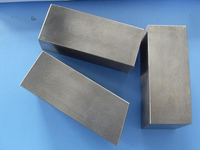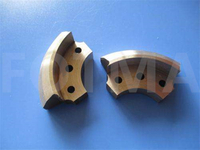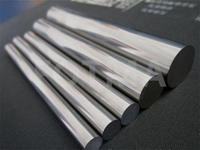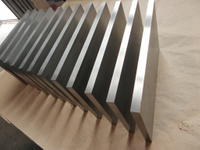Views: 29 Author: Site Editor Publish Time: 2020-02-24 Origin: Site
Sand casting is a method of obtaining a casting by pouring molten metal into a sand cavity, cooling and solidifying. When the casting is removed from the sand mold, the sand mold is destroyed, so it is also called one-time casting, commonly known as turning sand. And the casting process is mainly:
First, make patterns and core boxes
The appearance and the size of the core box should be determined according to the casting. The appearance, casting and parts are different. In size, the casting is equal to the part size plus machining allowance. The appearance is equal to the size of the casting plus the shrinkage (the shrinkage of the liquid metal during solidification, the type of casting material is different, the shrinkage rate is different. The free-line shrinkage of gray cast iron is about 1%, and the free-line shrinkage of cast iron and white cast iron. More than 2%, cast aluminum is about 1.3%.); In shape, the casting and the pattern must have a draft angle (easy to lift the mold). Casting fillets (easy to shape, avoid sand collapse); when there are holes in the casting At this time, a core head is required on the appearance so that the positioning of the core is fixed.
Second, configure molding sand and core sand
Core sand is made of sand, binder and water. If the binder is clay, it is called clay sand; if the binder is water glass, it is called water glass sand; if the binder is grease, it is called oil sand. In order to make various shaped cavities, the molding sand should have good plasticity. In order to prevent the mold cavity from being damaged during manufacturing, repairing, moving and pouring, the molding sand should have a certain strength. In order to exclude the gas in the sand mold and liquid metal, the sand should have good air permeability. In order to prevent sand sticking from casting at high temperature, the sand mold should have fire resistance. In order to make the casting shrink freely when condensing, the molding sand should be able to disintegrate automatically at this time, that is, there is a certain concession.
Third, core making and closing
Modeling, core making, and closing include: placing patterns, filling and compacting sand molds, lifting the mold, creating pouring feeders and vents, and closing the boxes. Which is the most critical. For some castings, the structure may be reasonable if only based on the analysis of the casting properties of the metal, but the convenience and possibility analysis of the molding core may be unreasonable, or even undesirable at all. The shape of the casting should be simple, and use as few curved surfaces as possible, especially non-circular curved surfaces, because the surface pattern is difficult to make; use cores as little as possible to avoid living blocks, and structural design should be reasonable to prevent wooden molds from bringing living blocks. Mold removal; try to reduce the number of parting surfaces (ie, the interface of the upper and lower sand molds). The fewer the parting surfaces, the fewer sandboxes are used, the less the possibility of wrong boxes, and the convenient the modeling. At the same time, in order to facilitate the ejection of the mold, the structural slope should be designed on the wall perpendicular to the parting surface. In addition, in order to ensure the convenience and possibility of modeling, care should be taken not to use a closed cavity, and the core should be placed firmly in the sand mold. Conveniently, the core should be vented smoothly. For large and complex castings, it is best to use combination castings.
Fourth, melting and pouring
For melting metals, special melting furnaces can be used, such as cupola for grey cast iron, crucible furnaces commonly used for non-ferrous metals, and electric furnaces for casting steel. The process of pouring liquid metal into a mold is called casting. Pay attention to the pouring temperature and pouring speed when pouring. If the pouring temperature is too high, the liquid contains a large amount of gas. The shrinkage is large, and it is easy to produce defects such as pores, shrinkage, and sticky sand. If the pouring temperature is too low, it is easy to produce insufficient pouring. Cold insulation. Subcutaneous pores. Therefore, the pouring speed should be appropriate and the pouring should be continuous to keep the outer gate full. The casting temperature of cast steel is high (about 1500 degrees Celsius), the fluidity is poor, the length of the spiral line is 100 mm, the shrinkage is large, and the total volume shrinkage rate is 12.4%. It is easy to get air in and oxidize during the melting process. Therefore, the casting properties of cast steel are poor, and it is easy to produce sand sticking, insufficient pouring, cold insulation, shrinkage, cracks, pores and other phenomena; copper alloys have a low melting point and good fluidity. . The silicon brass casting temperature is 1100 degrees Celsius and the spiral length is 1000 mm. Copper alloys are susceptible to oxidation during smelting. Care must be taken to prevent the alloy from oxidizing and burning during smelting. The aluminum alloy has a lower pouring temperature, generally around 680 degrees Celsius, and a spiral length of 700 to 800 mm. Aluminum alloy is easy to get inhaled and oxidized at high temperature, which affects its mechanical properties. Therefore, care must be taken to avoid contact between the alloy liquid and the furnace gas during smelting, and some purification measures must be adopted.
Fifth, cleaning and inspection of castings
After the casting is cooled to a certain temperature, it can be unpacked and cleaned up. Premature opening of the box will cause internal stress, deformation and cracking of the casting. Generally, the castings are unpacked at around 450 degrees Celsius. But falling sand should not be too late, so as not to affect productivity. The time of falling sand is related to the shape, size, wall thickness and casting alloy of the casting. For castings with a simple shape and less than 10 kg, the sand can be dropped within 0.5 to 1 hour after pouring. The castings after falling sand must be cleaned to eliminate the casting riser, core, sand sticking and flashing. The riser on gray cast iron parts can be removed with a hammer; the riser on cast steel parts must be removed by gas cutting; the riser on non-ferrous metal parts can be sawed off with a hacksaw. The core of the inner cavity of the casting can be cleaned manually or by using a core-shaping machine or a hydraulic sand cleaning device. Surface sticky sand, burrs and burrs can be removed by rollers, sandblasting, grinding wheels and other methods.





